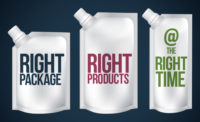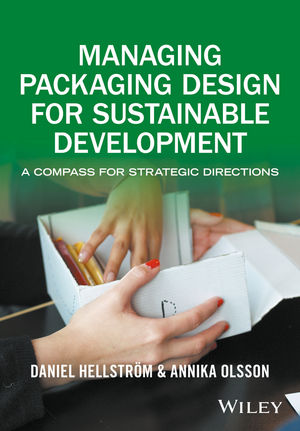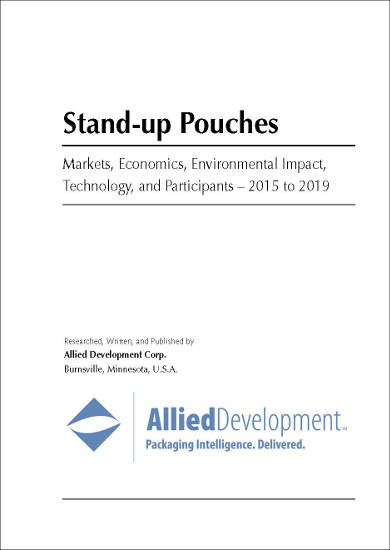PS News Special Report: Pouch Review
Pouches Can Be Functional and Strategic

White Lily specialty flours are sold in a reclosable box pouch; it won an award this year from the Flexible Packaging Assn.

Daisy Squeezable Sour Cream also has garnered several awards for its innovative plastic pouch.

An 8oz version of Duke’s Mayonnaise is in a distinctive easy-to-hold pouch.



Packaging has always been functional. After all one of its primary functions is to protect the product inside. But speakers at this year’s Global Pouch Forum, hosted by the Packaging Strategies group (publisher of this newsletter), discussed how packaging can go beyond the functional and become an integral part of the sales strategy, increasing, as one speaker put it, occasion of use.
With 22 speakers and 15 sessions over 1 ½ days—not including a pre-conference workshop and tour—the June 16 and 17 event was the largest ever in North America devoted to the pouch. There were 646 attendees and exhibitors eager to learn about market trends and the latest technology for the fastest-growing segment of the flexible packaging format.
Freedonia Group predicts pouches will be a $10bn U.S. industry in 2020, as consumer goods makers increasingly substitute plastics for glass, metal, and paperboard. Even though stand-up pouches are only about 20% of all pouches (the majority are flat, pillows, or sticks) they are forecast to rise 6.5% a year from 2015-2020, greater than the 4.4% rate overall, the research firm says.
Functionality is a big part of what is stimulating that growth, with value-added features such as spouts, zippers, and caps making great strides. Pouches are adaptable to lifestyle trends such as snacking, or on-the-go meals; a resealable feature makes food more convenient and allows it to be tossed into a stroller or car. They also extend the shelf life of foods, making them more desirable to small households.
And for big food companies pouches can bring new life to a brand. “They can reinvent a product considered a commodity,” said Dennis Calamusa, president of AlliedFlex Technologies Inc., a seller of pouch making machinery.
For instance, Daisy Brand last year introduced Daisy Squeeze Sour Cream in a flexible pouch with a flip-top resealable valve. The package can sit in the refrigerator door, taking up less space, and eliminates the necessity of a spoon.
The pouch was developed by Sonoco Products Co. in conjunction with partners AptarGroup Inc. for the closure and Continuum Innovation for the design and development.
Sonoco’s Sharayla Cleare, a marketing manager, spoke about how a lot of the innovation in packaging is occurring with products sold in the perimeter of the store—such as in the dairy, produce and deli sections. In addition to sour cream, yogurt is increasingly found in pouches—especially for kids—as new sealant films are developed that can block light and retard spoilage, and new fitments and spouts eliminate the spoon.
Even the supermarket rotisserie chicken has a new look and less packaging, courtesy of new flexible materials. Strong, heat-resistant materials and a press-to-close zipper pouch have eliminated the need for a tray or a rigid plastic dome and paperboard fastener.
Cleare cited data from Mintel Group that predicts the perimeter of the store is projected to grow 17% to $346bn by 2019.
New life for old products
However, pouches are bringing new life to what’s commonly called the center store as well. That’s where staples such as canned beans, flour, and soup reside.
For instance: mayonnaise. Commonly sold in jars or rigid plastic containers, at least one U.S. brand has expanded its line to include a pouch. C.F. Sauer Co.’s Duke’s Mayonnaise brand introduced a 1-cup (8oz) flexible pouch last year, the first of its kind in the mayonnaise category. It’s ergonomically designed for easier gripping, with a resealable spout. The 1-cup size is perfect for recipes, or picnics—eliminating the need to lug around a jar and worry about refrigeration.
ProAmpac worked with Duke’s to create an easy-to-hold shape that helps it stand out on the shelf. It also worked with White Lily Flour (part of J.M. Smucker Co.) to repackage some of its specialty premium flours in a reclosable box pouch, the first in its category, bringing flour out of a paper-walled bag. It includes a clear window, and the plastic material provides improved moisture resistance and a hook and loop zipper.
Bisquick, from General Mills, is now sold in pouches as well. Pillsbury, another General Mills brand, sells Heat-n-Go Mini Pancakes in a microwavable pouch, eliminating the need to mix up the batter and enabling a quick breakfast at the office that isn’t yogurt.
Some retailers are experimenting with new merchandising techniques by moving center-store items into the perimeter to reinvigorate them. Kellogg Co. has put some cereal in pouches and displayed them on a free-standing kiosk near the milk refrigerators. It has also experimented with smaller size pouches to capture the snacking market. The company plans to introduce about 40 new products this year and is making eating by hand from a pouch one of its marketing strategies.
Kraft Heinz this year introduced salad dressings for two in a 3.2oz pouch, Packaging Strategies News, April 15, 2016. According to the company, a pouch was chosen so that consumer could easily transport dressings in lunch bags. With a suggested price of $1.19 each they are also designed to sell more salad dressing. And they can be displayed with salad ready meals.
“Kraft has moved it out of the center store to make it a meal use occasion rather than a stock-up [occasion],” said Ron Sasine, principal with Hudson Windsor and former head of packaging for Wal-Mart Stores private brands.
At Campbell Soup Co., some soups are in pouches, such as the Go! brand. And its Plum Organics unit has launched a clear organic soup pouch. Even some of the Pepperidge Farm goldfish crackers are in resealable plastic pouches and now sold at places like convenience stores.
Consumers first
Changes in product packaging all are in response to the consumer, said Tom Miller, packaging systems development manager at General Mills, who gave the opening day keynote speech June 16. Miller has been with General Mills for 17 years and is responsible for the company’s technological direction and strategy, equipment supplier relationships and packaging technology innovation.
“It’s best to focus on the consumer. If you put the consumer first, you know you’re going to succeed.”
That’s part of the new thinking among big food companies. Formerly, Miller said, packaging was designed to meet the product’s needs, be economical, and please the consumer. Now the consumer is No.1.
But who is the typical consumer? Is it the millennial, or the baby boomer? Is it someone who is pinching pennies, or is a valued-added feature important? What is trending now?
Times have changed and Miller said General Mills is paying more attention to consumer trends than ever. For instance, he said about 50% of all eating occasions these days are snacking occasions, forcing the development of on-the-go packaging solutions.
Functionality also ranks high with consumers, as does sustainability and freshness. And finally they want to have shopping options—like being able to buy Goldfish crackers at the 7-Eleven—or online. Thirty percent of millennials do their grocery shopping online, compared to 17% of baby boomers.
More than 50% of global consumers and about 30% of U.S. consumers say that the impact a product will have on the environment affects purchasing decisions. Hence, more than two-thirds of General Mills products have How2Recycle labels. Material reduction has also been a focus.
And there is the desire for freshness: Miller says fresh foods contribute 28% to total store sales. Therefore, oxygen barrier alternatives have become more of a focus.
“The pouch allows us to address consumer needs,” he said, adding that, “There’s been a renewed interest from General Mills to really push the envelope and do things outside the box of how we’ve done in the past.” When it all fits together and it fits well, it drives great success.”
Looking for a reprint of this article?
From high-res PDFs to custom plaques, order your copy today!










